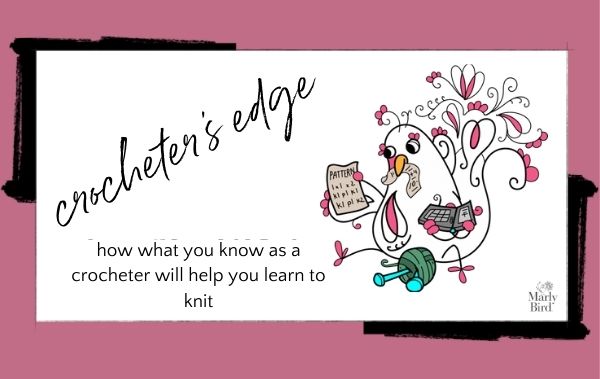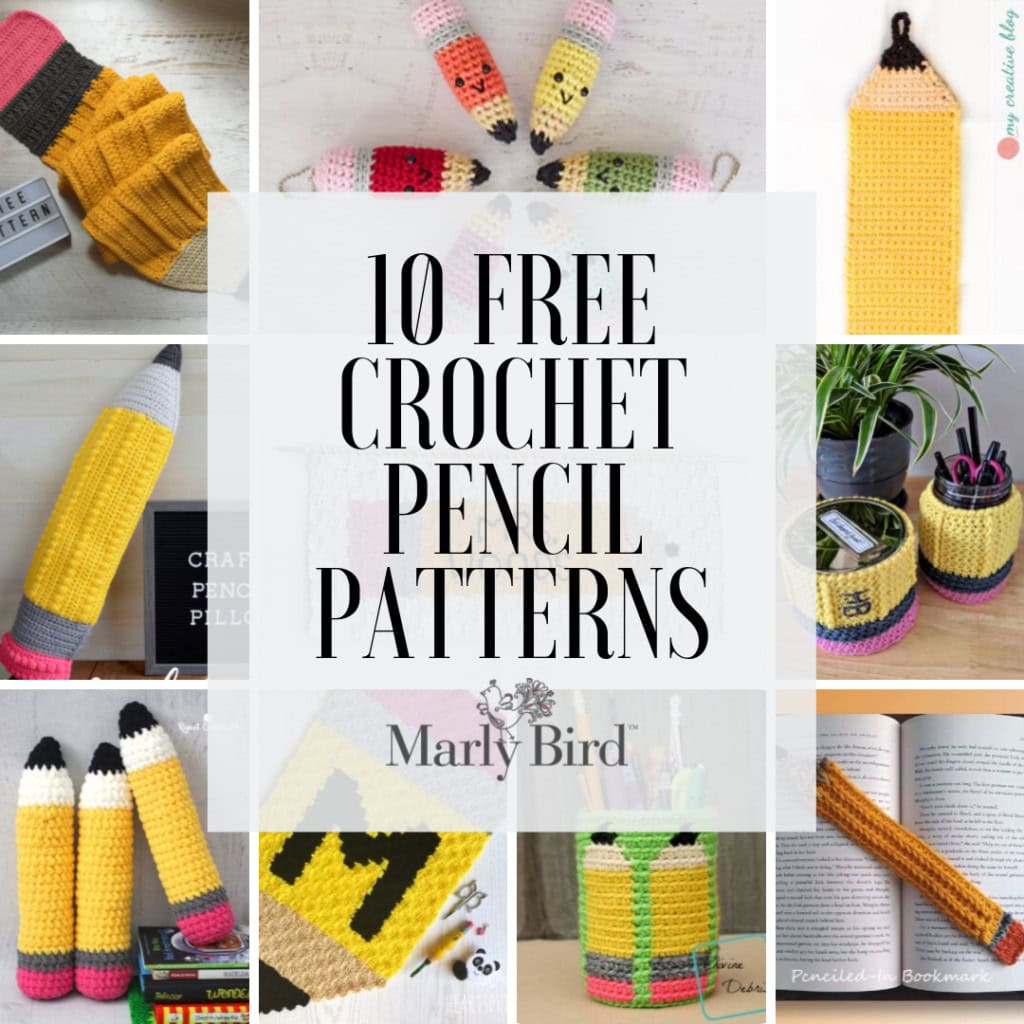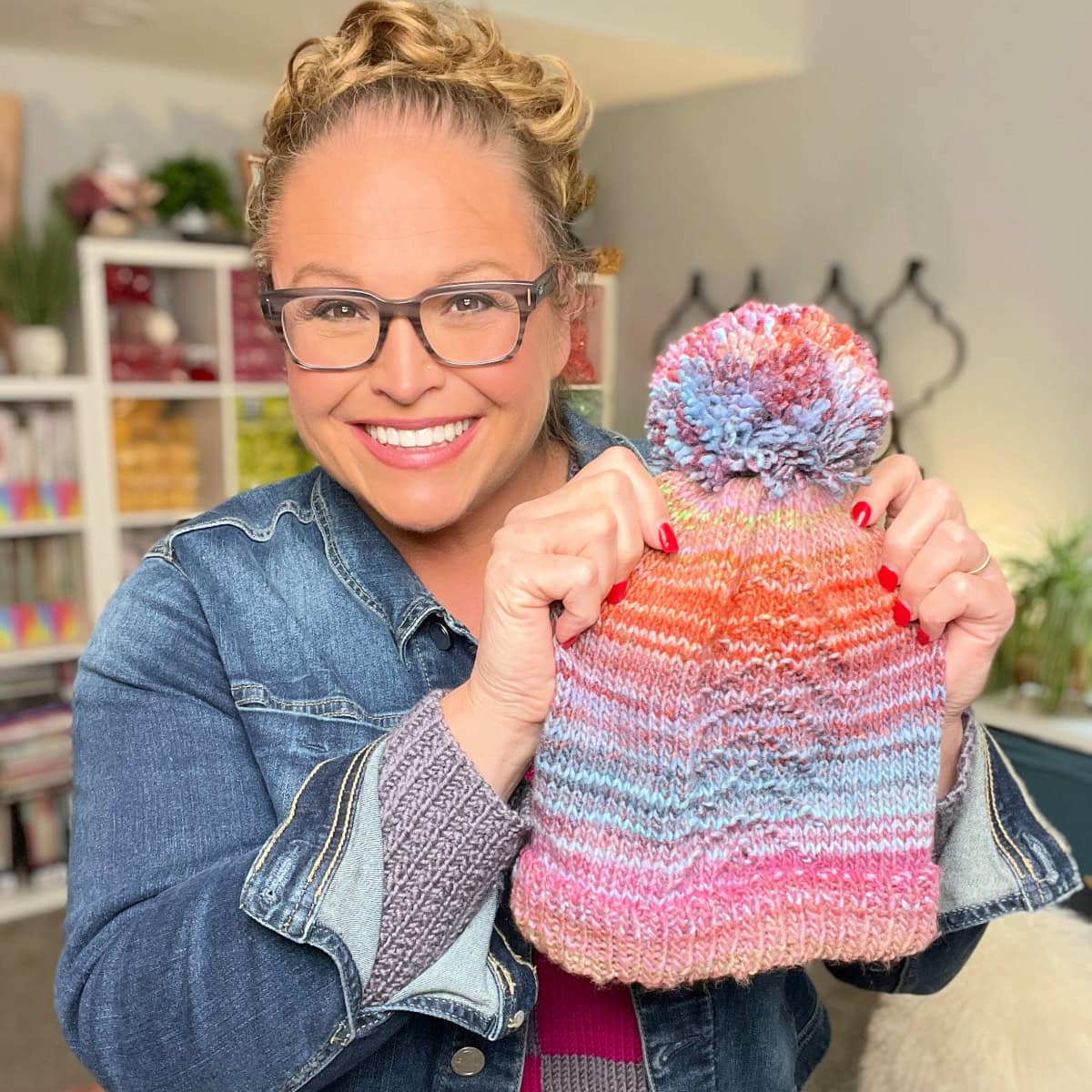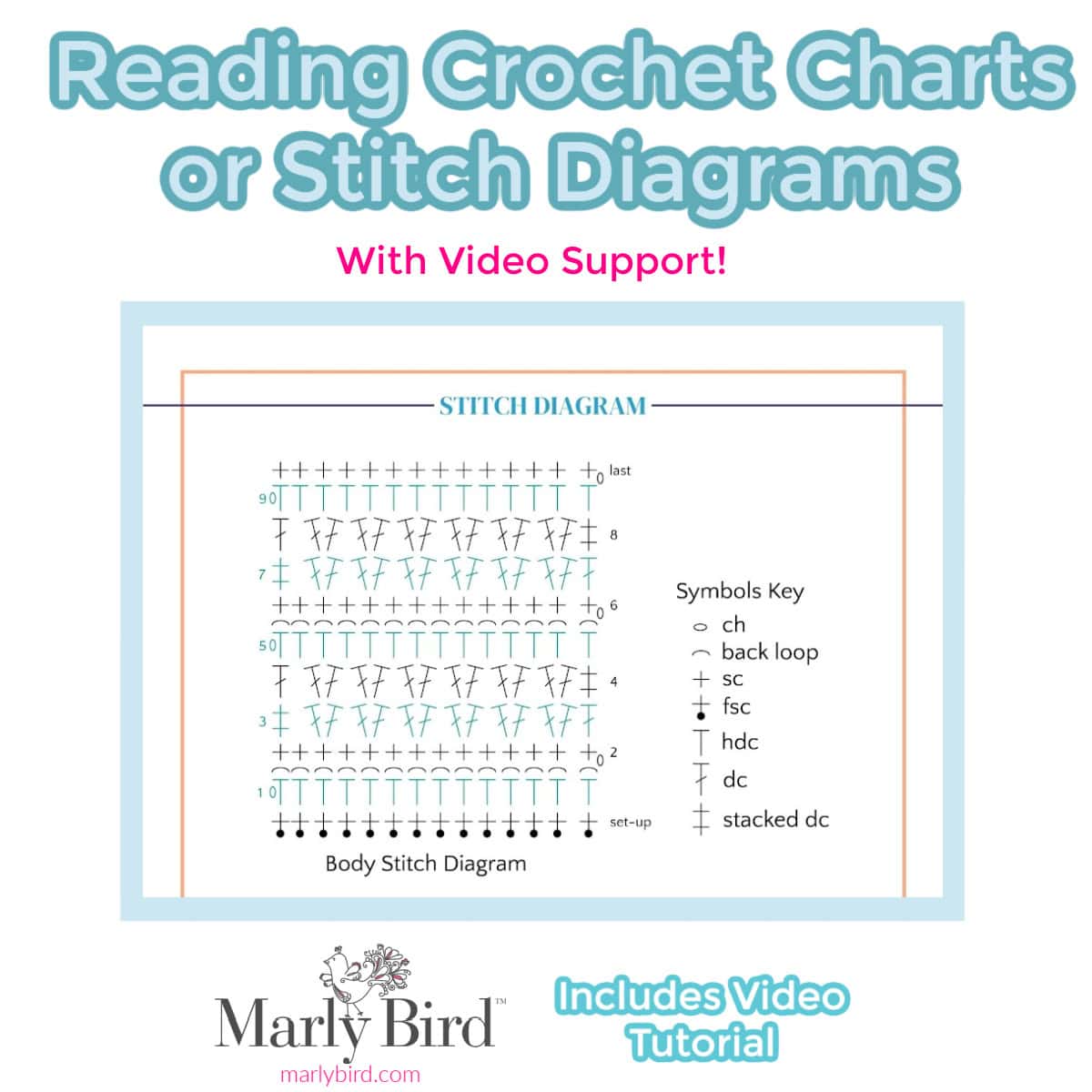Knitting Mittens For Beginners, Part Three (BiCrafty Bootcamp Lesson 17)
Over on our last BiCrafty Bootcamp: Knitting Lessons for Crocheters live video, Marly and I were marveling at just how far we’ve come in a few short months. Most of us didn’t even know the difference between types of knitting needles at the start of this weekly workshop. Now we’ve knit mug rugs and coffee cup sleeves, a cowl and a hat. And we’re about to wrap up knitting mittens for beginners.
BiCrafty Bootcamp Is Almost Done!
Before we get into the details for knitting mittens for beginners, let’s talk about this bootcamp. It’s almost come to its end! You’ve learned what you need to know as crocheters to truly considered yourselves knitters now. Heck, you’ve mastered the Latvian Braid which many experienced knitters don’t even know. So yes, bootcamp is coming to an end. But that doesn’t mean your adventures are over. Here are some ideas for next steps:
- If you haven’t already, it’s not too late to join the BiCrafty Champions workshop. We’re doing it as an Olympics CAL/KAL. But you’ll get both the crochet and knitting patterns (and all the video instructions, etc.) so you can do the knit part on your own time if you wish.
- Or, if you’re looking for something with a little bit less time investment, then join the Christmas in July Stocking KAL/CAL. It actually takes place August 6-8. This is a great opportunity to practice your knitting skills. In fact, if you watched last week’s live video, you saw a sneak peak of the knit stocking. Therefore, you know that you already have all of the knitting skills necessary to complete it.
- Keep Your Eye Out for BiCrafty Bootcamp: Crochet Lessons for Knitters. That’s right, many people have asked and we’re ready to provide! Even if you’re an experienced knitter, you might enjoy learning Marly’s approach. Plus it provides a great opportunity to get back into your crochet groove with weekly projects / homework. Moreover, we’d love your input as crocheters about how best to teach knitters the craft. You can help us a lot!
Crocheter’s Edge: We Want Your Input

We’ve shared a lot of crocheter’s edge tips with you over the past few months. These are ideas about how to apply what you know in crochet to make it easier to learn knitting. Hopefully these have been helpful. However, as in-depth as we try to be, we can’t know what works best for everyone. So we would love your help … what are your best tips as crocheters who have learned how to knit? What would you suggest as the best crocheter’s edge tips for these lessons? Input wanted!!
Knitting Mittens for Beginners, Parts 1 and 2
If you’re all caught up on our lessons, then here’s what you’ve done already:
- In Part 1, you learned the provisional cast-on. Then you added the Lacy Arrows Stitch to your repertoire. This gave you the cuff part of the knit mittens.
- In Part 2, you added the optional Latvian braid detail that you had already learned previously. Then you learned to pick up stitches and create a thumb gusset.
Knitting Mittens for Beginners, Part 3
Now it’s time to almost finish up these knit mittens. You’re going to learn a lot here as a final push to achieve in BiCrafty Bootcamp. We believe in you! This week we’re going to finish up those thumbs. We’ll work on more shaping, then you’re going to learn kitchener stitch, how to pick up and knit that thumb and do a 3 needle bind off.
At the end, you’ll have knit mittens that complement your knit hat and cowl.
This Week’s Live Video
BiCrafty Community Mittens
Designed by Marly Bird
SKILL LEVEL
Intermediate
MEASUREMENTS
To Fit Size
Adult Medium Women (Adult Large Women, Adult Large Men)
Hand Circumference: 7-8 (8-9, 9-10) inches [18-20.5 (20.5-23, 23-25.4) cm]
Finished Measurements
Finished Hand Circumference approx: 7 (8, 9) inches [18 (20.5, 23) cm]
Hand Length (not including cuff) approx: 6 (7, 8) inches [15 (18, 20.5) cm]
Gauge
24 stitches and 30 rows = 4″ (10 cm) in Stockinette stitch in the round
MATERIALS
Yarn
Red Heart, Chic Sheep by Marly Bird™ (100% washable merino wool; 186 yds [170m], 3.5 oz [100 g]): 2 ball MC, 1 ball CC (optional for Latvian braid).
Needle
US 7 (4.5 mm) set of 5 double pointed needles — or size required for gauge
Hook
US H (5mm) for provisional cast on.
>> Use Code: MARLYKNITS and get 10% off your order of Signature Needle Arts <<
Notions
Scrap yarn for holding stitches, stitch markers, tapestry needle
ABBREVIATIONS
BO – Bind Off
CO – Cast On
DPN – Double Pointed Needle
K – Knit
LHN – Left Hand Needle
M1 – Make 1 (1 increase)
P – Purl
RHN – Right Hand Needle
Skp – slip 1, knit 1, pass slipped stitch over knit st
Sk2togp – slip 1 knitwise, k2tog, pass slipped st over knit st
Sl – Slip
SSK – slip, slip, knit
St st – Stockinette Stitch (see pattern stitches)
st(s) – stitches
SPECIAL STITCHES
k2tog: Knit 2 stitches together (1 st decreased).
M1: (make 1) Insert LHN under horizontal strand between st just worked and next st, from the front to the back, knit through the back loop (1 st increased).
Kitchener Stitch:
Divide stitches evenly onto 2 dpns, and hold them parallel to each on the with WS facing. With working yarn on back needle, cut yarn, leaving a long tail, and thread tail into tapestry needle.
Prep: Bring threaded tapestry needle through first st on front needle as if to purl, leave on the needle. Bring threaded tapestry needle through the first st on the back needle as if to knit and leave on the neede.
Step 1: Bring threaded tapestry needle through first st on front needle as if to knit and slip this st off needle.
Step 2: Bring threaded tapestry needle through next st on front needle as if to purl and leave st on needle.
Step 3: Bring threaded tapestry needle through first st on back needle as if to purl and slip this st off needle.
Step 4: Bring threaded tapestry needle through next st on back needle as if to knit and leave st on needle.
Rep Steps 1–4 until all stitches have been grafted.
Front needle: Knit off, purl on.
Back needle: Purl off, knit on.
Provisional Cast-on: Using a crochet hook and scrap yarn, chain desired number of stitches. Fasten off. Using knitting needle, pick up and knit 1 st in each chain, using the back-bump, or spine, of the chain. After piece is completed, you can unravel the crochet chain to reveal, and work from, live stitches at CO edge. Here’s a video to show you how you’ll do this part:
Three Needle Bind Off Method: Slip the stitches from holders onto each of 2 needles; with the RS of garment pcs together (to form ridge on inside of garment), hold the needles parallel. With a third needle knit the first st of front and back needles together, *knit next st from each needle together, (2 sts on rhn), BO 1 st; rep from * until all sts are BO.
NOTES
- Sizes are written for the smallest size. If changes are necessary for larger sizes the instructions will be written thus ( ).
- Mittens are worked in the round from cuff to fingers.
VIDEO TUTORIALS
- How to do Latvian Braid https://youtu.be/O2Cxvqh68w0
- How to add a lifeline to knitting https://youtu.be/FiqYUE_aHAw
- How to Kitchener Stitch without ears https://youtu.be/lGxJ7wccHGA
- How to bury in ends https://youtu.be/8_NBGUKjO-E
Knit Mittens Pattern, Part 3
HAND CONTINUED…
Continue in Stockinette stitch until the hand measures about 6 (7, 8)” [15 (18, 20.5) cm] from cuff or approx. 2.5” [6.3 cm] from desired top of mitten.
TOP OF MITTEN
Distribute the number of stitches the 4 dpn’s as follows:
Needle 1: 11 (12, 14) stitches
Needle 2: 10 (11, 13) stitches
Needle 3: 11 (12, 14) stitches
Needle 4: 10 (11, 13) stitches
Round 1 (decrease round):
Needle 1: Knit to three stitches to the end of the needle, ssk, k1,
Needle 2: K2tog, knit to the end of the needle,
Needle 3: Knit to three stitches to the end of the needle, ssk, k1,
Needle 4: K2tog, knit to the end of the needle — 4 stitches decreased.
Rounds 2 and 3: Knit
Repeat rounds 1-3 two times more — 30 (34, 42) stitches remaining.
Repeat rounds 1 and 2 three times — 18 (22, 30) stitches remaining.
Repeat round 1 for 2 (2, 3) times — 10 (14, 18) stitches remaining.
1st FINISHING
Place the stitches from needles 1 and 4 on a needle, and the stitches from needles 2 and 3 on another needle.
Graft mitten stitches together using Kitchener stitch as follows: Hold both needles together in your left hand, with wrong sides facing inward.
Cut a long tail from the working yarn (about 4 times the width of the fabric to be joined), and thread tail into yarn needle.
Proceed with Kitchener stitch across row.
Weave in all loose ends.
THUMB
Place gusset stitches from scrap yarn onto dpn’s.
Round 1: With MC, pick up and knit 1 stitch at cast on, then with RS facing, work in Stockinette stitch around the thumb — 10 (12, 16) stitches
Continue in Stockinette stitch until measures 1.5 (2, 2.5)” [3.8 (5, 6.3) cm] or to desired length.
Next Round: *K2tog; repeat from * to end of round — 5 (6, 8) stitches.
Cut yarn leaving a long tail and thread onto tapestry needle. Working around the work, insert the tapestry needle as if to knit and remove the stitch from the needle. Pull the tail through all the stitches and pull snug like a drawstring.
Weave in tail to the WS of the mitten.
2nd FINISHING
Seam Cuff
The cuff can be kitchenered together should you wish, however, I like to have a seam on my cuff to withstand the pull and tug of putting on the mittens. Therefore, I prefer the three needle bind off method.
Set-up: Starting at the end of the crochet chain from the provisional cast on, unravel the chains and as the knit stitches are released from the chain, place them on a dpn.
Note: When the first row you knitted into your chain is released from the chain, it will not appear as a knit or purl.
On the other side of the cuff, place the stitches on scrap yarn on another dpn.
With the RS of the cuff facing you, starting at the last row of the cuff and working with the long tail, proceed to execute the three needle bind off the two sides of the cuff.
Weave in all ends.











